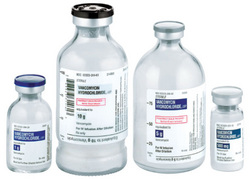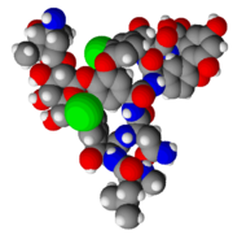Treatment of Staphylococcus aureus Infections

Staphylococcus Aureus infections are treated with some form of antibiotics according to the type of infection:
Antibiotic ointment for minor skin infections.
Oral antibiotics for skin infections.
Intravenous antibiotics for serious and life-threatening infections.
Surgical draining of abscesses.
Antibiotics History:
Penicillin was initially the primary antibiotic used against Staphylococcus aureus in 1943 when penicillin was first introduced, but most strains have grown resistant to penicillin.
Fact: By 1950, 40% of Staphylococcus aureus infections in the hospital were penicillin-resistant; by 1960, it doubled to 80%; today it is 98%.
Other antibiotics that proved effective were penicillinase-stable penicillins such as oxacillin, flucloxacillin, and methicillin.
Fact: Since the 1970s, Staphylococcus aureus has grown resistant to these penicillinase-stable penicillins; these new strains are called MRSA or methicillin-resistant Staphylococcus aureus.
The antibiotic, vancomycin, is now used successfully against most strains of Staphylococcus aureus, including MRSA.
Fact: In 2002, the first case of VRSA or vancomycin-resistant Staphylococcus aureus was reported in the world; by 2005, only four cases have been confirmed.
Antibiotic ointment for minor skin infections.
Oral antibiotics for skin infections.
Intravenous antibiotics for serious and life-threatening infections.
Surgical draining of abscesses.
Antibiotics History:
Penicillin was initially the primary antibiotic used against Staphylococcus aureus in 1943 when penicillin was first introduced, but most strains have grown resistant to penicillin.
Fact: By 1950, 40% of Staphylococcus aureus infections in the hospital were penicillin-resistant; by 1960, it doubled to 80%; today it is 98%.
Other antibiotics that proved effective were penicillinase-stable penicillins such as oxacillin, flucloxacillin, and methicillin.
Fact: Since the 1970s, Staphylococcus aureus has grown resistant to these penicillinase-stable penicillins; these new strains are called MRSA or methicillin-resistant Staphylococcus aureus.
The antibiotic, vancomycin, is now used successfully against most strains of Staphylococcus aureus, including MRSA.
Fact: In 2002, the first case of VRSA or vancomycin-resistant Staphylococcus aureus was reported in the world; by 2005, only four cases have been confirmed.

